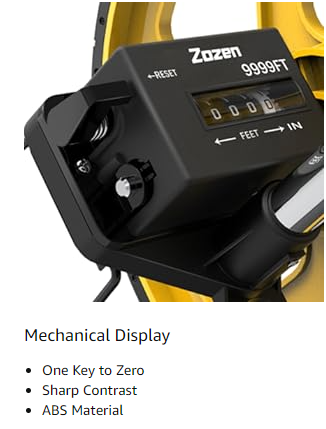
-
 Afrikaans
Afrikaans -
 Albanian
Albanian -
 Amharic
Amharic -
 Arabic
Arabic -
 Armenian
Armenian -
 Azerbaijani
Azerbaijani -
 Basque
Basque -
 Belarusian
Belarusian -
 Bengali
Bengali -
 Bosnian
Bosnian -
 Bulgarian
Bulgarian -
 Catalan
Catalan -
 Cebuano
Cebuano -
 Corsican
Corsican -
 Croatian
Croatian -
 Czech
Czech -
 Danish
Danish -
 Dutch
Dutch -
 English
English -
 Esperanto
Esperanto -
 Estonian
Estonian -
 Finnish
Finnish -
 French
French -
 Frisian
Frisian -
 Galician
Galician -
 Georgian
Georgian -
 German
German -
 Greek
Greek -
 Gujarati
Gujarati -
 Haitian Creole
Haitian Creole -
 hausa
hausa -
 hawaiian
hawaiian -
 Hebrew
Hebrew -
 Hindi
Hindi -
 Miao
Miao -
 Hungarian
Hungarian -
 Icelandic
Icelandic -
 igbo
igbo -
 Indonesian
Indonesian -
 irish
irish -
 Italian
Italian -
 Japanese
Japanese -
 Javanese
Javanese -
 Kannada
Kannada -
 kazakh
kazakh -
 Khmer
Khmer -
 Rwandese
Rwandese -
 Korean
Korean -
 Kurdish
Kurdish -
 Kyrgyz
Kyrgyz -
 Lao
Lao -
 Latin
Latin -
 Latvian
Latvian -
 Lithuanian
Lithuanian -
 Luxembourgish
Luxembourgish -
 Macedonian
Macedonian -
 Malgashi
Malgashi -
 Malay
Malay -
 Malayalam
Malayalam -
 Maltese
Maltese -
 Maori
Maori -
 Marathi
Marathi -
 Mongolian
Mongolian -
 Myanmar
Myanmar -
 Nepali
Nepali -
 Norwegian
Norwegian -
 Norwegian
Norwegian -
 Occitan
Occitan -
 Pashto
Pashto -
 Persian
Persian -
 Polish
Polish -
 Portuguese
Portuguese -
 Punjabi
Punjabi -
 Romanian
Romanian -
 Russian
Russian -
 Samoan
Samoan -
 Scottish Gaelic
Scottish Gaelic -
 Serbian
Serbian -
 Sesotho
Sesotho -
 Shona
Shona -
 Sindhi
Sindhi -
 Sinhala
Sinhala -
 Slovak
Slovak -
 Slovenian
Slovenian -
 Somali
Somali -
 Spanish
Spanish -
 Sundanese
Sundanese -
 Swahili
Swahili -
 Swedish
Swedish -
 Tagalog
Tagalog -
 Tajik
Tajik -
 Tamil
Tamil -
 Tatar
Tatar -
 Telugu
Telugu -
 Thai
Thai -
 Turkish
Turkish -
 Turkmen
Turkmen -
 Ukrainian
Ukrainian -
 Urdu
Urdu -
 Uighur
Uighur -
 Uzbek
Uzbek -
 Vietnamese
Vietnamese -
 Welsh
Welsh -
 Bantu
Bantu -
 Yiddish
Yiddish -
 Yoruba
Yoruba -
 Zulu
Zulu


Nov . 16, 2024 19:25 Back to list
pulley chain hoist
Understanding the Pulley Chain Hoist A Comprehensive Overview
In various industries where heavy lifting is a routine requirement, the pulley chain hoist stands out as an indispensable tool. This mechanical device employs a series of pulleys and chains to facilitate the lifting and lowering of heavy objects with minimal effort. Understanding how it works, its components, applications, and advantages can greatly enhance its efficient use in different scenarios.
How the Pulley Chain Hoist Works
At its core, the pulley chain hoist operates on a simple yet effective mechanical principle known as the mechanical advantage. By distributing the weight of a load across multiple pulleys, the force required to lift that load is significantly reduced. The basic setup consists of a chain that rolls over one or more pulleys, with one end attached to the load and the other linked to a hand-operated or motorized mechanism. As the chain is pulled, it moves over the pulley, raising the load vertically.
Key Components
1. Pulleys The pulleys are the heart of the hoist system, crafted from robust materials to withstand high loads. Depending on the design, they may have a fixed or movable configuration, impacting the overall resilience and lifting capability.
2. Chain The chain connects the load to the pulley system. Chains are typically made of high-strength steel to ensure durability and safety, with links designed to minimize slippage and enhance grip.
3. Ratchet and Pawl Mechanism Many chain hoists incorporate a ratchet and pawl system which prevents the load from falling when the lifting force is released. This safety feature is crucial in safeguarding workers and assets.
4. Brake System Effective brakes are essential for controlling the descent of the load. Hydraulic or mechanical brakes are common in modern hoists, providing smooth and controlled lowering of heavy items.
pulley chain hoist

5. Frame The frame houses all these components and provides the structural integrity necessary for safe operation. Frames are designed to accommodate various working environments, ensuring stability and durability.
Applications of Pulley Chain Hoists
Pulley chain hoists find applications in a multitude of sectors including construction, manufacturing, shipping, and even in automotive workshops. They are extensively used for
- Lifting Equipment Heavy machinery parts, engines, and tools can be efficiently lifted and positioned in tight spaces. - Moving Goods In warehouses, hoists facilitate the movement of heavy pallets and containers, enhancing storage efficiency and safety. - Construction In building sites, hoists are crucial for transporting materials to various heights, reducing the physical strain on workers. - Theater Productions They are also employed in stage setups to lift and lower heavy props and backdrops.
Advantages of Using Pulley Chain Hoists
The benefits of employing pulley chain hoists in lifting operations are numerous
- Ease of Use They require minimal physical exertion to lift heavy loads, making work safer and more efficient. - Versatility They can be used in various applications, accommodating different weights and sizes. - Space Efficiency Their design allows for use in confined spaces where other lifting equipment might not fit. - Cost-Effectiveness Given their durability and low maintenance needs, they represent a sound investment for businesses focused on improving operational efficiency.
Conclusion
The pulley chain hoist exemplifies the brilliant application of mechanical engineering principles to solve everyday lifting challenges. By understanding its components, functionalities, and advantages, operators can effectively utilize this tool to enhance productivity while ensuring safety in the workplace. Whether in heavy industry or a small workshop, the pulley chain hoist proves to be a reliable ally in the continuous quest for efficiency and effectiveness in handling heavy loads. It remains a testament to how simple mechanisms can lead to significant advancements in operational practices.
Latest news
The Unique Design of Cable Socks
NewsJun.04,2025
Swivel Connectors in Industrial Automation
NewsJun.04,2025
Safety Features of Link Sticks
NewsJun.04,2025
How to choose the best cable pulling winch for sale
NewsJun.04,2025
Fish tape safety precautions
NewsJun.04,2025
Essential Maintenance Tips for Cable Pulling Tools
NewsJun.04,2025











